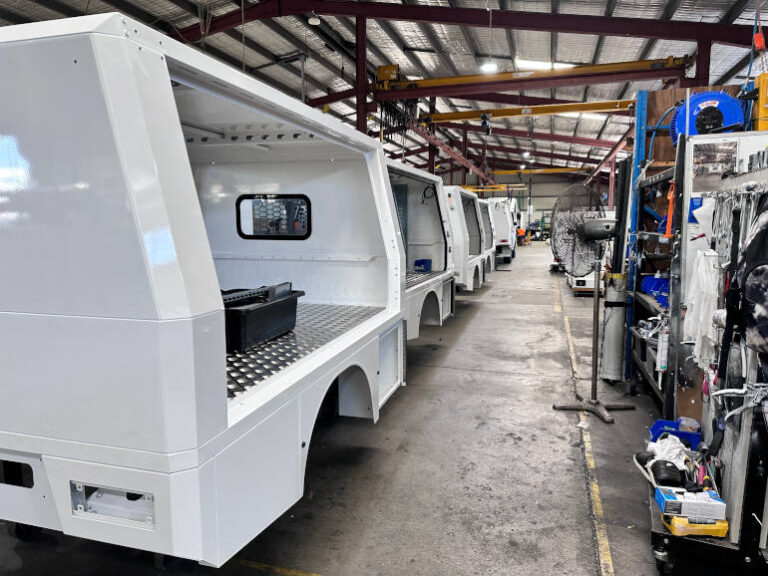Over the past three decades, the humble service body has transformed from a basic white metal box into an engineered, safety-critical component of the modern work vehicle. For JP Shelburn, Managing Director of XL Service Bodies, the pace of change has only accelerated — driven by technology, safety, sustainability, and customer demand.
“Building service bodies is not what it used to be 30 years ago,” JP said. “It’s highly involved with electrical, technical CAN bus, professional harness manufacturers supplying us… The supply chain that the automotive industry is challenged with — we are too.”
Smarter Engineering and Testing
Service bodies today must integrate seamlessly with vehicle systems — including advanced driver-assist technologies — while delivering durability, efficiency, and performance.
“We run through the design phase, the mass changes, and then we run it through the FEA [finite element analysis],” JP explained. “And then from there, we actually have an accelerated vibration testing rig… We’ve been using this testing rig now for the better part of 12 to 14 years.”
Rigorous testing caught the attention of Ford Australia, which involved XL in its QVM (Qualified Vehicle Modifier) and Ford Pro Converter programs.
But the testing goes beyond structural durability. When Telstra updated its fleet with the new Ranger platform, XL took the extra step of wind tunnel testing to improve fuel efficiency.
“We actually went and put our bodies with the vehicle into the Monash University Wind Tunnel Facility,” JP said. “We did wind drag coefficient analysis… we were able to save 1.2% on wind drag. The estimated fuel savings from that design change was about 1.2%.”
Fit for Purpose Leads the Design
A common thread in XL’s design philosophy is that application drives design — not the other way around.
“You can’t just have a double cab and think that you’re going to have a beaver tail overhang and it’s going to work,” JP said. “You have to be realistic about what you can and can’t do.”
For fleet managers, this means starting with a clear understanding of operational needs. JP emphasised that while many procurement teams aim for standardisation, real-world work groups remain diverse.
“Everybody talks about it — we want to standardise the fleet,” he said. “But then you have your work groups. And your work groups aren’t standardised. They do diverse work.”
XL brings flexibility through its strong engineering team and willingness to customise within safe and compliant parameters. As JP noted, requests sometimes require pushback:
“We had a major fleet customer ask us to make a service body for a light utility, 1900mm wide. It was a big order and a big decline. Too wide, you’re going to have issues. It’s dangerous.”
The Circular Economy and Design Life
Sustainability is now a core part of XL’s approach. Not only are bodies designed for durability — with some units still on the road after 25 years — but end-of-life and recyclability are actively considered.
“Our bodies are fully recyclable,” JP said. “All of our test bodies get crushed and recycled.”
XL also pioneered recycling programs for components removed during fitout:
“We were taking off the factory front bumper — brand new. It’s not like a spare part… it’s basically rubbish. We went through the steps, working with recycling organisations to find the right process. Now they are granulated and used in road base and other markets.”
When Should Designs Change?
How often should fleet managers review their service body specifications? JP advises tying reviews to vehicle model changes and evolving regulatory or operational needs:
“If it works, immediately — don’t change. But when we went from the PX Ranger to the P703 Ranger, total rework from the ground up,” he said.
Wind drag, fuel consumption, load requirements, and safety innovations all feed into new designs — but not every small change needs to trigger a redesign.
Ultimately, the principle remains simple: start with the application and design fit-for-purpose from there.
“You’ve got to consider the application first — and where the vehicle needs to go,” JP said.






